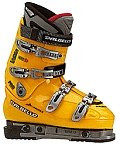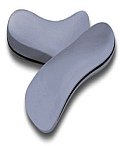Orthotic Boot Inserts.
Why relevant to skiing?
Orthotic boot inserts may assist you with the edge control of your ski. When you are skiing your entire body shifts the centre of gravity from one side to another, the downward forces are exerted on you feet, and in turn on your ski boot. As you do this you need to maintain a certain stance whilst attempting to control your skis. These inserts may give you the edge in controlling the ski, at the same time allowing you to maintain correct alignment.
Are there other benefits?
Besides giving you edge control benefits, they can also help relieve pressure sores, hot spots, pain relief, local tendon inflammation (tendonitis), protrusion of neural tissue in between joints ( neuromas) heel spurs pain relief, as well as, with overall postural alignment, thus assist with with knee pain, or back pain. Are you still here? That was a mouth full. Well sounds like a big ask from a humble orthotic insert, but it may be a simple remedy for your chronic problem.
It prompted me to write an article on this, as one of our family members has experienced significant enhancements in his skiing since he undertook an assessment. His challenge was conquering symmetrical turns, being more skilled turning one way and not the other. A simple boot insert which altered the sideways rotational plane of the foot, improved his stance, and turning technique.
What types of orthotic inserts are there?
There are three types utilizing different polymers to determine the stiffness of the insert .
- 1. Soft Boot Inserts .Does not have many applications in downhill skiing, but may be beneficial for cross country skiers where repeated downward stomping takes place. Cushioning the foot and assisting with prolonged effort could help with the overall comfort of the foot. In circumstances whereby foot arthritis sets in, loss of peripheral circulation is diminished ( as diabetes), or general dissipation of fat inside the foot has occurred, the benefit of soft inserts may be appreciated. Just bear in mind this is the thickest type of insert, hence extra space is required to accommodate it within the boot within the boot.
- 2 .Semi-rigid orthotic boot inserts, will be more applicable to downhill skiers where stabilization of the foot within the boot space is paramount. The sideways movement also needs to be limited, at the same time providing comfort and support to the sole of the foot.
- 3.Rigid orthotic boot inserts, when custom fitted are designed to limit foot movement to major two foot joints lying below the ankle. We feel the application to downhill skiing is limited other than in cases where an individual has unequal leg length. Form what we found from podiatricians it is not all that uncommon.
Are these orthotic inserts expensive?
Our due diligence suggests the costs vary from US $ 20.00 for the soft variety through to US $ 100 plus category for ones which are custom contour mapped and adjusted for weight distribution.
If you want to have the edge on the situation, and want to eliminate any impediment , consider this profiling. There are shops present around ski resorts which will provide this service for you so ask around. If you are pushing your own boundaries and want to have a piece of mind, which will not cost you a fortune, check these places out.
So what’s involved in having these orthotic boot inserts done?
- 1. Weight distribution mapping. You will be asked to stand on a platform which resembles a weight scale. This platform may have perforations which allow pegs to be fed from under the foot , presumably fitted with pressure sensors they will read your weight distribution over your foot surface. This enables the technician to gauge where most of the weight is applied. You may be asked to do this in various stances.
- 2. Contouring the foot. When you stand on the platform , the protruding pegs will get an idea how your foot is contoured. The computer takes this information onboard and decides how to profile your orthotic boot insert.
- 3. Postural, alignment assessment. As the final stage of the assessment your cuff cant will need to be adjusted in an attempt to align the foot bed. Following this, the entire postural alignment is checked.
So not only are your feet requirements met, but also your postural needs.
From orthotic boot inserts back home.






